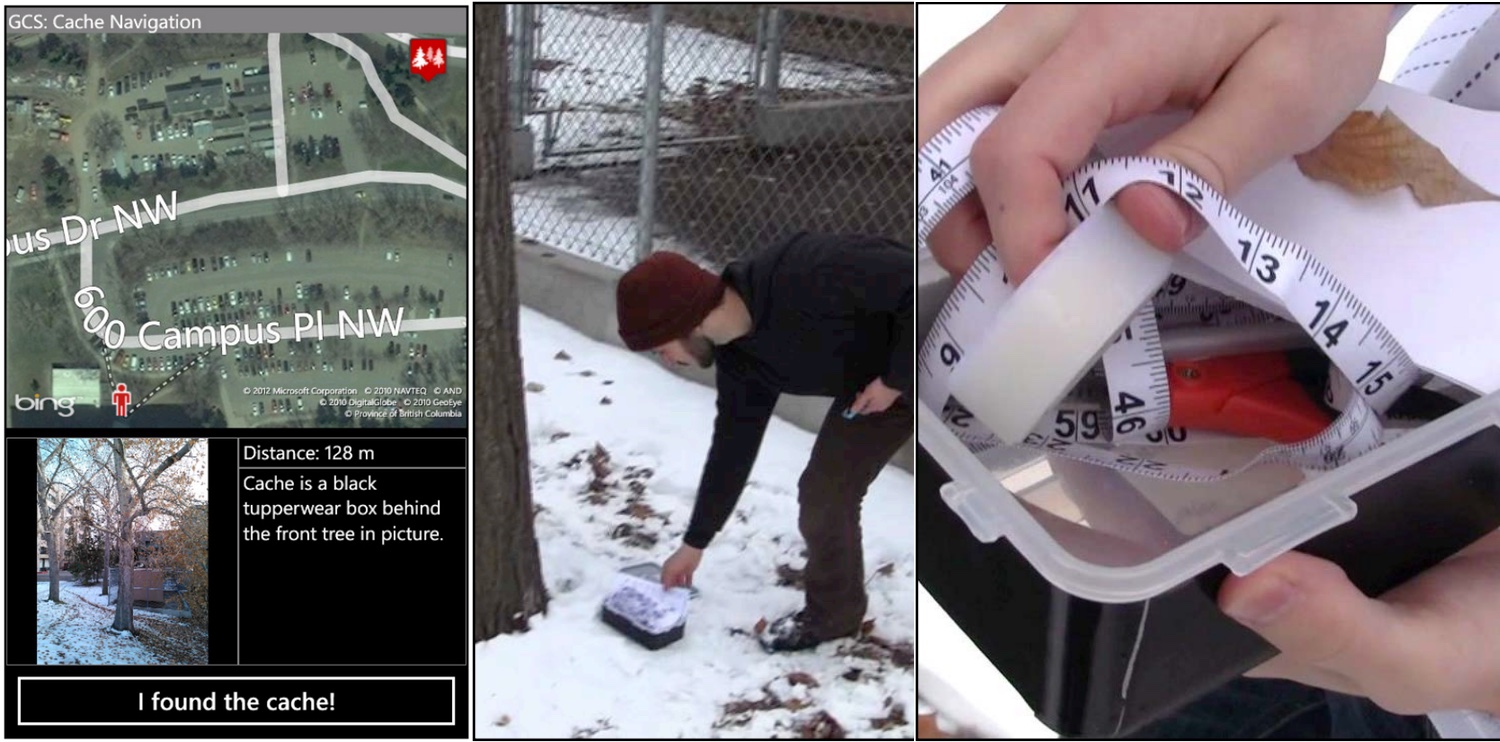Pervasive Games and Citizen Science
Physical games in daily life for science

David Fincher’s 1997 classic The Game tells the story of a live-action game that permeates a character’s entire existence. This is the inspiration for our interest in pervasive games, which allow participants to play as a part of their everyday lives. Geocaching, a real-life scavenger hunting game, is perhaps the most successful of these kinds of games, allowing people to play as part of their daily routine (Neustaedter, Tang, & Tejinder, 2010).
In this project, we have achieved three major objectives. First, we have studied and analyzed the factors that make geocaching successful (Neustaedter, Tang, & Tejinder, 2010). Second, we have tried to design our own pervasive games in an attempt to replicate those successes (Neustaedter, Tang, & Judge, 2013; Neustaedter, Moulder, Wakkary, Judge, & Tang, 2012; Jeffrey, Blackstock, Finke, Tang, Lea, Deutscher, & Miyaoku, 2006). Finally, with ScienceCaching, we have married the fun, ad hoc nature of Geocaching with the meaningful tasks of citizen science (Dunlap, Tang, & Greenberg, 2015; Dunlap, 2013).
Publications
Matthew A. Dunlap, Anthony Tang, and Saul Greenberg. (2015). Applying geocaching principles to site-based citizen science and eliciting reactions via a technology probe. Personal and Ubiquitous Computing 19, 5-6: 897–913. (journal).
Carman Neustaedter, Anthony Tang, and Tejinder K. Judge. (2013). Creating scalable location-based games: lessons from Geocaching. Personal Ubiquitous Comput. 17, 2: 335–349. (journal).
Matthew A. Dunlap. (2013). Science Caching: Applying Geocaching to Mobile Citizen Science. (thesis).
Carman Neustaedter, Vicky Moulder, Ron Wakkary, Tejinder Judge, and Anthony Tang. (2012). Designing Mixed Reality Games to Study Culture, Family Practices and Social Engagement. In Mixed Reality Games - Workshop at CSCW 2012. (Bonsignore, Elizabeth and Hansen, Derek L. and Toups, Zachary O. and Nacke, Lennart E. and Salter, Anastasia and Lutters, Wayne, Eds.) (workshop).
Carman Neustaedter, Anthony Tang, and Judge K. Tejinder. (2010). The role of community and groupware in geocache creation and maintenance. In CHI ’10: Proceedings of the SIGCHI Conference on Human Factors in Computing Systems, ACM, 1757–1766. (conference).
Phillip Jeffrey, Mike Blackstock, Matthias Finke, Anthony Tang, Rodger Lea, Meghan Deutscher, and Kento Miyaoku. (2006). Chasing the Fugitive on Campus: Designing a Location-based Game for Collaborative Play. Loading.. Journal 1, 1. (journal).